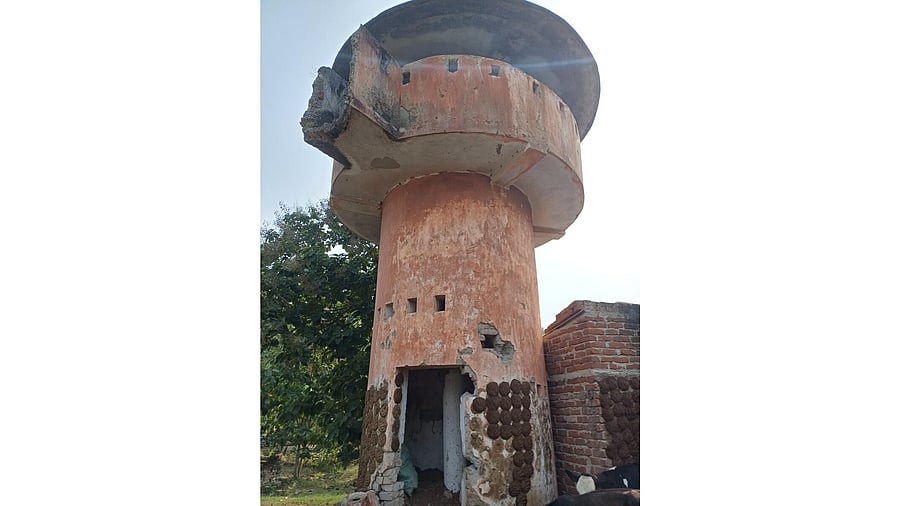
The dilapidated watchtower of Jehanabad's old jail.
Credit: DH Photo
Santosh Devi, in her 50s, vividly remembers the night when a group of armed men and women launched an all-out attack to break into the Jehanabad jail premises. Her rented home, doubling as a daytime tea shop, stood right against the boundary wall of the jail.
“Suddenly, there was a gherao and everything turned chaotic. We heard voices shouting, ‘Climb up the jail!’ and others warning, ‘We won’t harm the public, just lock yourselves inside or we will shoot’,” she recalls. She remembers seeing ladders and ropes being used to scale the walls. By morning, two people lay dead, parts of the jail building had collapsed, and several inmates had escaped.
The jailbreak happened on the night of November 13, 2005, in the middle of the Bihar Assembly election campaign, when the state was under President’s Rule. The incident took place in Jehanabad, once considered a hotbed of Maoist insurgency. President’s Rule had been imposed in the state after no political party or alliance was able to secure a majority in the elections held in March-April that year.
The incident made national headlines and entered public memory as the biggest jailbreak in the country. A total of 389 out of 800 prisoners escaped. The case became a reference point in the collective memory for the height of “lawlessness” and Maoist insurgency, which had spread from Naxalbari in West Bengal since the late 1960s.
Later, investigations revealed the attack was carried out to release Ajay Kanu, the Naxal commander reported to have masterminded the jailbreak.
“I was sleeping at home when we first heard gunshots and explosions. At first, we thought it was fireworks. But soon after, there was an announcement that the group had come to free their leaders and that the public need not worry,” recalls Anil Kumar Yadav, 44.
Yadav’s home stood right next to the jail, beside the watchtower — now a crumbling ruin. The jail has since been shifted, leaving most of the old premises abandoned. On part of the land, a residential complex for judges has been built.
'Black night'
Sanjiv Kumar Yadav, 45, whose house stood barely 50 steps from the jail, also remembers the long night. “At that time, people were afraid, but it was an exceptional case and has gone down as a black night in the history of Jehanabad,” he says. Asked whether it was the result of ‘jungle raj’, he replies, “Jungle Raj is a poem we are told to recite repeatedly, used for political gain.”
Incidentally, the incident also marked the end of Lalu Prasad Yadav’s regime in Bihar, as he has remained out of power in the state ever since. Days later, the Nitish Kumar-led NDA formed the government.
Peace returned over the next five years, ending cycles of violence rooted in land, caste and social justice conflicts. By 2024, Bihar was “freed from Left-Wing Extremism”, which had once gripped Jehanabad, Arwal, Aurangabad and a dozen districts in central and south Bihar.
“There is such a difference between then and now. Today, we can vote according to our own choice. Back then, the big upper-caste people wouldn’t even let us reach the polling booth,” says Ramdev Rajvanshi, a Dalit, at a chowk near Laxmanpur Bathe, site of one of the worst caste massacres in 1997, where 58 members of his community were killed.
Two years later, in 1999, 34 men from the Bhumihar community in Senari village were allegedly killed by Maoists in retaliation for the Laxmanpur Bathe massacre. Modern Bihar’s history has been scarred by such large-scale killings.